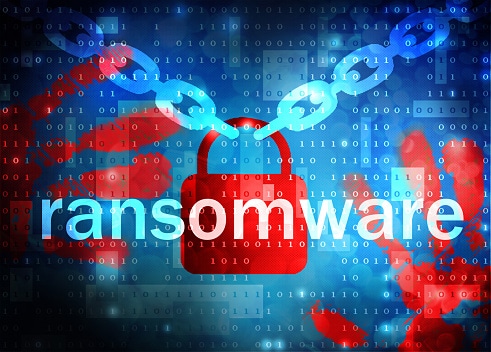Ransomware has quickly become one of the biggest cyber threats to businesses today, especially given the recent Wanna Cry epidemic that infected hundreds of thousands of IT systems in more 150 countries. This kind of malware presents serious data integrity and financial concerns for affected businesses. It works by tricking a user into opening an executable file (either as an email attachment or downloaded from a webpage linked in an email) which then encrypts the victim’s files and holds them for ransom.

A majority of cybersecurity services offered today include the best in vital technologies, from firewalls to anti-malware to data encryption and more. However, as important as this technology is, on its own, it simply isn’t enough to protect against threats like ransomware. The key to truly comprehensive cybersecurity is simple, yet often overlooked: the user.
Cybersecurity company Malwarebytes has found that as many as one-third of businesses like yours were hit by ransomware within the last year – the key to all these incidents? The “human factor”. Included in Malwarebytes’ Second Annual State of Ransomware Report, data showed that, of the 32% of organizations that were hit by malware, 20% had to immediately halt their operations.
It gets worse – further statistics showed that:
- 25% of businesses were hit with more than 20 ransomware attacks in 2016
- 31% of affected businesses in Australia did not know they were hit by ransomware, as compared to 9% in the US
- 46% of Australian victimized businesses paid the ransom, and after paying, 40% still lost their files.
Cybersecurity gimmicks — such as “set it and forget it” firewalls and antivirus software — fail to account for how important the user is. Even the most effective digital security measures can be negated by simple human error, which is why conventional solutions are simply not enough to ensure your business’ safety. Much of cybersecurity is dependent on the user, and as such it’s vital that you properly educate your employees in safe conduct. The more your workforce knows about the security measures you have in place, the more confidently they can use the technology in a secure manner.
“People [behind the ransomware attacks] are going to more of the human factor now,” said Malwarebytes Senior Systems Engineer Brett Callaughan to CNET. “A lot more attackers are becoming aware of the fact that they can make small amounts of money on a grand scale very quickly if they completely automate this. The attackers we’re seeing are extremely sophisticated — they’re not fussed about creating a file and making something look real. They’ll just go after the user and they’ll spray and pray. If you hit 100,000 email accounts and 10,000 hit the button and you’re charging $200 a piece? That’s a significant amount of income right there from doing very little.”
So what can you do? First of all, ensure your employees are comprehensively trained in cybercrime awareness and prevention so that they can help keep your business safe. Training should include:
- How to identify and address suspicious emails, phishing attempts, social engineering tactics, and more.
- How to use business technology without exposing data and other assets to external threats by accident.
- How to respond when you suspect that an attack is occurring or has occurred.
- Further vital information that your staff needs to maintain a secure business.
That said, employee awareness will only do so much. Remember that ransomware is likely today’s biggest threat to cybersecurity, which means anything less than a comprehensive defense won’t be enough. You hear about it everywhere, along with a range of possible solutions, most of which are defensive – ways to keep the intruders out before they encrypt your files and send you the ransom note.
Both industry leaders and cybercrime law enforcement members agree that the best defense against ransomware, other types of malware and similar cybersecurity threats is a robust data backup contingency. Have you invested in one for your business?
When developing your ransomware defense, keep these recommendations in mind:
- Make a considerable investment in a comprehensive backup data recovery solution so that you can restore your data at a moment’s notice when necessary.
- Test your backup and cybersecurity measures thoroughly and regularly; create dummy files and then delete them to see how fast they can be restored, or schedule a day to literally unplug your critical systems to find out how long it takes to get online again.
- Be sure to make the most of the available resources (both provided online and through expert IT consultants) to ensure that you’re not overlooking vulnerabilities in your IT security methodology.
The good news is that you don’t have to do all this on your own. Partner with an experienced, expert provider of security support and solutions like CleverPath IT today to ensure you’re comprehensively protected from ransomware on all fronts.
For more information about how to train your employees to protect your business against ransomware, get in touch with CleverPath IT right away at (888) 686-3025 or [email protected].

 Mon-Fri 8 AM to 6 PM Mountain
Mon-Fri 8 AM to 6 PM Mountain 888-686-3025
888-686-3025



